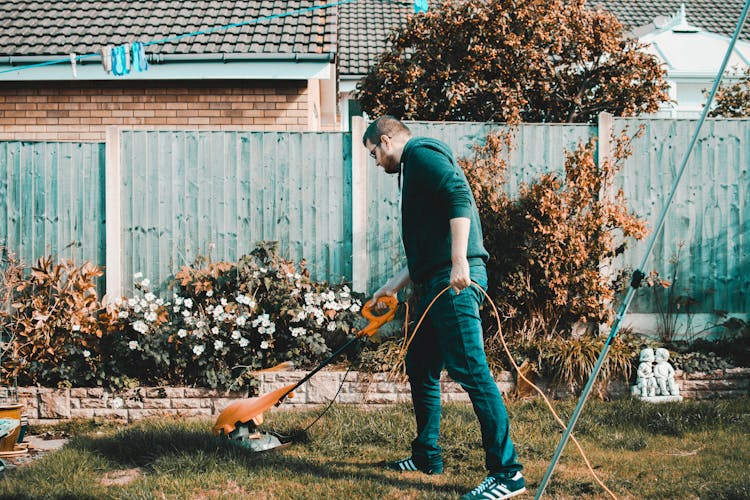Table of Contents
- – Urban Plant Selection Essentials
- – The Importance of Climate and Space in Plant S...
- – Keeping Your Urban Oasis Vibrant Throughout th...
- – Effective Strategies for Thriving Urban Gardens
- – Finding Solutions to Urban Gardening issues
- – What plants are best for urban gardens?
- – How can I maximize my limited urban gardening...
🌱 TLDR Summary:
- 🌞 Choosing plants that thrive in urban settings can transform your space.
- 🌿 Consider climate, space, and light for optimal plant selection.
- 🌼 Select a mix of plants for year-round interest and beauty.
Urban Plant Selection Essentials
Creating an urban garden, whether on a balcony, rooftop, or a small yard, can be immensely rewarding. However, it requires careful thought regarding plant selection. Urban environments offer unique challenges, including limited space, variable sunlight, and differing microclimates. When selecting plants, understanding which species adapt well to these conditions is crucial. Often, urban gardeners can succeed with a range of plants, from flowering florals to deep-rooted vegetables, all depending on their specific environment and the care they can provide.
One way to ensure plant success is to choose hardy species known to thrive in urban areas. Native plants are often the best candidates, as they are adapted to local environmental conditions. For instance, plants like coneflowers or black-eyed Susans can add a vibrant splash of color while attracting pollinators. Even herbs like basil and thyme not only enhance culinary endeavors but also flourish in smaller spaces. Moreover, incorporating a variety of heights and textures can create a visually interesting garden, enhancing appeal throughout the seasons.
To aid in your selection, local extension services and gardening centers offer resources tailored to specific geographic locations. Websites dedicated to gardening advice can also assist in determining which plants will thrive in your local climate, ensuring your urban garden flourishes.
The Importance of Climate and Space in Plant Selection
When planning your urban garden, it’s vital to assess your planting space's light and climate conditions. Full sun, partial shade, and full shade can dramatically influence which plants will thrive. Conducting a simple light assessment can help you understand the best planting locations, whether that’s on a rooftop with abundant sunlight or a shady balcony surrounded by tall concrete buildings.
Additionally, urban gardens often contend with heat retention caused by concrete and steel structures. This heat can create a unique growing environment, sometimes allowing the cultivation of plants that might not typically survive in cooler areas. For example, heat-loving crops such as peppers and tomatoes will flourish under these conditions. Don't forget to utilize vertical gardening techniques to maximize space. Vertical planters or trellises can house climbing plants such as peas and cucumbers, allowing for greater yield in confined areas.
Keeping Your Urban Oasis Vibrant Throughout the Seasons
Year-round interest is vital in any garden, particularly in urban settings where space and natural beauty may be limited. To achieve this, a mix of evergreens, perennials, and seasonal annuals is often recommended. Evergreens provide structure and color during winter months, while perennials can bloom in succession throughout the growing season.
Selecting flowering plants that bloom at different times can provide continual visual interest. For instance, early bloomers like daffodils herald the spring, while late bloomers like asters can extend your garden’s color into the fall. Additionally, incorporating a variety of foliage textures—from glossy to silvery can also maintain aesthetic appeal, even when flowers are not present.
Effective Strategies for Thriving Urban Gardens
Urban gardening doesn’t have to be complicated. Simple strategies, such as using raised garden beds or container gardening, can facilitate effective space utilization. Raised beds improve soil drainage and can elevate gardening above harsh concrete surfaces, while containers provide flexibility in arranging your garden. Options like the Best Choice Products 72x23x30in Raised Garden Bed can offer efficient growing spaces even in limited areas.
Furthermore, urban gardeners can maximize their potential by engaging with local gardening communities or online forums. Here, they can exchange tips, share their experiences, and gather advice on what works in similar neighborhoods. With a bit of creativity, urban spaces can be transformed into thriving green sanctuaries filled with beauty and bounty.
Finding Solutions to Urban Gardening issues
Urban gardening does come with challenges. Issues such as limited access to natural resources, small spaces, and city regulations may restrict plant growth. However, numerous solutions exist. For example, choosing drought-resistant plants can alleviate water scarcity concerns, and using vertical gardening techniques can optimize small areas. Additionally, befriending your local zoning office can clarify regulations regarding urban gardening, allowing for a smoother process when planning your oasis.
Overall, successful urban gardening combines careful planning and creative solutions. By selecting the right plants based on climate and space, as well as incorporating features for all-season interest, city dwellers can cultivate beautiful and productive gardens.
What plants are best for urban gardens?
How can I maximize my limited urban gardening space?

See crucial information here
Table of Contents
- – Urban Plant Selection Essentials
- – The Importance of Climate and Space in Plant S...
- – Keeping Your Urban Oasis Vibrant Throughout th...
- – Effective Strategies for Thriving Urban Gardens
- – Finding Solutions to Urban Gardening issues
- – What plants are best for urban gardens?
- – How can I maximize my limited urban gardening...
Latest Posts
Cultivating Resilience: Growth Mindset in Challenging Times
Embracing Change: How Growth Mindset Transforms Lives
Nourish Your Body: Essential Tips for a Balanced Diet
Navigation
Latest Posts
Cultivating Resilience: Growth Mindset in Challenging Times
Embracing Change: How Growth Mindset Transforms Lives
Nourish Your Body: Essential Tips for a Balanced Diet